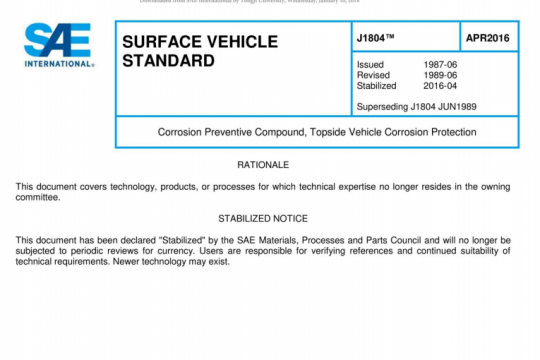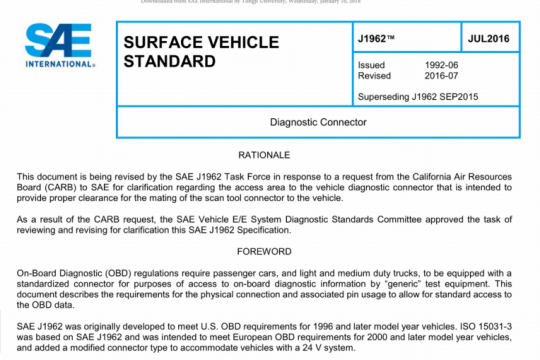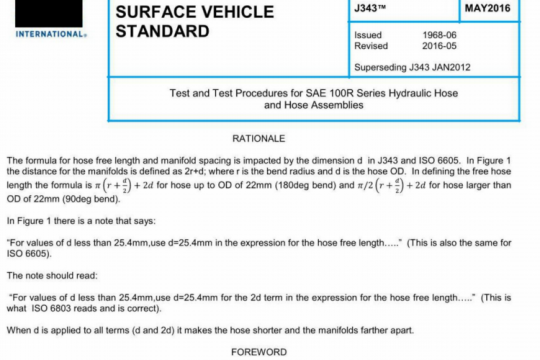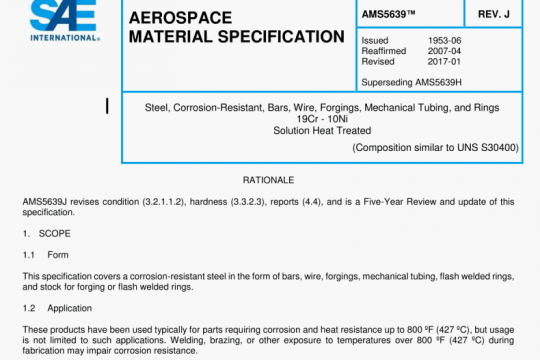SAE J2468:2018 pdf free
SAE J2468:2018 pdf free.High-Preload Deflection and Compressibility Test Procedures for Friction Materials
Compressibility is the transient deflection or reduction in thickness of the brake friction material or brake pad assembly, due to compressive load. The actual dimensions (thickness, flatness, parallelism, etc.) and shape of the friction material under testing will also influence the compressibility characteristics and behavior. For brake pad assemblies, compressibility can also include the deflection of the noise shims (μm).
Hysteresis is the lag in deflection that occurs with brake pads and shims during the unloading condition compared to the loading condition. Hysteresis creates a loop in the deflection versus load curve and depends, among other parameters, on the load application rate, the dwell times, and the material under testing. Calculate hysteresis as the ratio (or percent) of the stored energy over the total input energy during the apply cycle. See Figure 1; use Equations 3 through 5.
All test equipment, fixtures, and samples shall be inspected prior to use. Nicks, burs, corrosion, or contamination on any contacting surfaces can cause variation in the test equipment that can exceed the intended measurement capability of the test procedure.
A 15 mm thick steel plate made of the same material as the heating platen is required. Length, width, surface finish, and flatness of steel plate shall allow full surface contact between the steel plate and piston simulator, and between the steel plate and heating platen. The steel plate is intended to reduce the potential for damaging the heating platen during piston simulator baseline deflection measurements. Maintain and verify the flatness and parallelism to be within 2 μm.
NOTE 1: The steel plate is a precision device. It must be protected during storage to avoid contact with other parts, and they must be stored in an environmentally controlled location. Conduct a visual inspection prior to testing. The surface topography should be verified annually, using optical or laser holography. Verify flatness and parallelism to be within specification. If any part of these devices show surface damage (nicks, corrosion, or excessive material deposits), they should be reworked and re-qualified, or replaced.
NOTE 2: A poor-quality steel block (high surface roughness or lack of flatness) can cause extra deflection during the machine baseline measurement. This additional deflection can lower the compensated results in 2 to 5 μm.SAE J2468 pdf free.




